D. Gray-Man: Series 1 Part 1
Introduction
With the quite frankly astounding Darker Than Black and Claymore in 2009, Manga have got to kick off 2010 with something special indeed if they want to live up to the standards they have set themselves. They certainly seem to be getting off on the right foot with D. Gray-Man, a gothic horror series set in an alternate 19th Century, offering a little supernatural steampunk. It looks to be a daunting prospect for anime collectors though, running as it does to 103 episodes in length, although that will be mitigated somewhat by Manga's current predilection for 13-episode collections. Surprisingly, this lengthy shonen series doesn't come via Viz, as so many of them do. And this series bears little resemblance at first glance to behemoths like Bleach and Naruto. D. Gray-Man is actually one of Funimation's flagship titles in the US, and they have to date released the first season of the show, running to a total of 51 episodes. Also, they have recently just released the first 26 episodes over again, but this time on Blu-ray. If Manga Entertainment follow suit, this may turn out to be the first mainstream anime series in the UK to get the hi-def treatment, although a lot of what-ifs and wherefores need to be asked and answered before that happens. First let's make sure that Funimation release the second season as well in the US, before we start counting chickens.
With such a long running series (the manga is still ongoing), you can bet there is a whole lot of mythology to take in, so here's a brief précis. It's the end of the 19th Century, and a 15-year-old exorcist named Allen Walker comes to Britain to join the Black Order, a group of exorcists tasked with keeping the world safe from Akuma, or demons. Long ago in the mists of antiquity, there was a war between the ancients and the Millennium Earl. The Millennium Earl sought to destroy the world and he did so by creating Akuma, mechanical demons, fusions of machine, a soul and a tragedy, feeding on human souls to evolve into ever more powerful killing machines. The only thing that could stop them was a fantastic substance known as Innocence, and weapons fashioned from it were the only things known to destroy Akuma. 109 fragments of Innocence were scattered around the world during the Great Flood, and now the Black Order searches for it to use in their fight against the Millennium Earl, while at the same time, the Millennium Earl seeks it to destroy it. Allen has a piece of Innocence embedded in his disfigured left hand, giving him the ability to sense and destroy Akuma. Together with the Black Order, he joins the battle against the Millennium Earl.
Manga Entertainment releases the first 13 episodes of D. Gray-Man in a two-disc collection. This set has a slightly higher R.R.P. than usual at £22.99, and hopefully by the end of this review, I'll know who D. Gray-Man actually is…
Disc 1
1. The Boy Who Hunts Akuma
Allen Walker is on his way to the Black Order, when he has to make an unscheduled stop as a cat eats his pet golem Timcanpy. The cat takes refuge in an abandoned building, abandoned because it is reputedly haunted. He's trying to catch the cat, but the building has an Akuma in it, one that attacks and kills a policeman who ventures in to investigate. Allen rescues the surviving policewoman, Moa, and gets arrested for his trouble. A young boy at the scene of a murder, weird red hand, glowing cross embedded in it, he has to be suspicious. But without evidence, they can't hold him, so they put him Moa's care so that she can keep an eye on him. At her house, Allen meets her wheelchair-ridden brother-in-law Marc, depressed and listless, shying away from food ever since his wife, Moa's sister died. But Marc isn't Marc anymore.
2. The Black Order
Allen has to climb a perilous cliff just to get to the Black Order's headquarters. His mentor General Cross Marian has sent him there, with his golem Timcanpy to join up. It's just that no one in the Black Order has been expecting him, and the gate, seeing a pentagram tattooed into his forehead, decides that Allen is actually an Akuma. Allen Walker is cursed, yet carries a piece of Innocence in his left hand. He'll have to be tested…
3. The Ghost Of Mater
The mercenary sword-wielding exorcist Kanda and warm-hearted Allen are destined to rub each other the wrong way, and almost come to blows in the canteen, when Kanda decides to lay into a couple of Finders. Finders are those exorcist candidates that are rejected by Innocence, and wind up doing the drudgework for the Black Order. As luck would have it, Allen's first mission for the Black Order is to Southern Italy, to help a squad of Finders recover a newly discovered piece of Innocence. As fate would have it, his first mission is partnered with Kanda. Weird things happen where Innocence resurfaces; in this case a ghost is apparently haunting the ruined city of Mater. But the Akuma are already there.
4. Old Man of the Soil and a Lonely Night's Aria
The Akuma has evolved into a level 2 stage; it's developed a personality, and has acquired abilities beyond those of just a simple demon. This one can imitate and take on the powers of others, which is why Allen finds himself face to face with his mirror image. This mirror image has no qualms about killing its foes, and lacks Allen's humanity. Meanwhile Kanda learns the truth about the Ghost of Mater, of how the people of the arid city created a doll to entertain and enchant them, giving it a living heart of Innocence. The city fell to ruin, but the doll survived, and became the Ghost. Only now the ghost has adopted a child to take care of and to sing to. Kanda will need to take the heart of the doll to obtain the Innocence, but he will effectively be ending two lives by doing so.
5. Let Me Hear The Lullaby
While Kanda may have a mercenary personality, Allen certainly doesn't and the two disagree with how to deal with the doll. Kanda states that time is of the essence, but Allen would rather grant the doll's final wish to sing one final song for its adopted child. The argument is moot though, as the Akuma returns, and takes the heart of Innocence for itself. Now Allen's really mad, and that rage is about to awaken a whole new side to his abilities as an exorcist.
6. That Which Calls Forth Disaster
Returning home, Allen and the Finder Toma have to spend some time in the city, although Toma isn't best pleased when Allen is sidetracked by a young boy on roller skates who's a self proclaimed Akuma hunter. It turns out that John's father works for the Black Order as a scientist, and the boy is keen on following his father's footsteps. Allen hasn't the time or wherewithal to warn John to stay clear of this dangerous path, and has to return to the Black Order to add the newest piece of Innocence to those collected so far. But when he hears of trouble in John's town, of a Finder being murdered, he drops everything and heads back.
7. Tombstone of Memories
He heads back straight into trouble. An Akuma has already lured John into a trap, and Allen finds him in a graveyard, confronted by the Millennium Earl. But this isn't their first meeting. As the Millennium Earl calls forth an army of Akuma to face Allen, Allen has to face his own past, of his adoptive father Mana, of the fateful deal that he made with the Millennium Earl, of the curse that was placed upon him, and the moment that his disfigured left hand awoke. That's a lot of memories to distract him. Fortunately the exorcist Lenalee has followed Allen there as back up.
Disc 2
8. The Black Order Annihilation Incident
Chief Komui is trying to be helpful, he's trying to lift the heavy burden from his overworked scientists, and he's built a giant robot named Komlin II. Only robots aren't supposed to drink coffee. Now Komlin II has a short circuit, and wants to help Allen whether he needs help or not. Meanwhile, elsewhere the Millennium Earl is hosting a meeting and making plans.
9. The Rewinding Town
Allen and Lenalee are next sent to a town where a bizarre phenomenon may just be caused by the presence of Innocence. The town is sealed off from the outside world by a barrier that keeps everyone out but Innocence users, and the same day, October 28th keeps repeating inside the city walls. That's except for one woman, Miranda Lotto, who has experienced the same day over and over again 30 times, and is getting sick and tired of it. Imagine her surprise when Allen and Lenalee appear, suddenly changing the old routine. What's worse is that Akuma are there as well, searching for the Innocence for their master. What's more, one of the Millennium Earl's allies from the previous meeting, a grey-faced girl named Road Kamelot is their directing the Akuma.
10. The Bad Luck Woman's Innocence
It all revolves around Miranda Lotto, the Innocence, the town being sealed off, the day being repeated, and of course the presence of the exorcists and the Akuma. It's just a matter of why, and it becomes obvious that the way that Miranda is shunned by society, the way she just doesn't seem to fit in, has a big part to play in it. It all began when she happened upon a neglected grandfather clock, one that was being treated just the way she is. It could very well be that Miranda is an Accommodator of Innocence, with the potential to become an exorcist just like Lenalee and Allen. But solving this problem will be a lot tougher than that. And just when they are getting to the root of Miranda's low self-esteem, the Akuma return.
11. Miranda Lotto's Feelings
They've been captured, Lenalee is catatonic, Miranda is chained up to her precious grandfather clock, and Allen is being tortured by Road Kamelot, of the Clan of Noah, in league with the Millennium Earl, and wishing to complete the eradication of humanity that the great deluge left undone. In the depths of despair, Miranda has an odd reaction to her clock.
12. And Snow Falls Over The Town
Miranda has a unique power, she's able to hold back time itself, and with that power, Allen and Lenalee are able to continue battling the Akuma and Road Kamelot. But Road has some final chilling lessons to impart to Allen, and when, in the end, time does catch up to the exorcists, it may not leave them alive.
13. With The Coat
As Allen recuperates, he's joined in the hospital by the Exorcists' leader Komui, and a couple of new exorcists, Bookman and his apprentice Lavi. There's some serious research that needs to be done on the Clan of Noah, and what their new alliance with the Millennium Earl means. Allen's got more pressing problems. Although his cursed eye was destroyed in the battle, that same curse means that it is regenerating. But in the interim, he's no longer able to tell the difference between humans and Akuma in disguise. Suddenly, he's terrified of everyone he encounters. It appears that Allen has a lesson yet to learn about being an exorcist.
Picture
D. Gray-Man comes in a 1.78:1 anamorphic widescreen flavour, as all modern anime are wont to do. It's an NTSC-PAL conversion of course, although it's a relatively benign one, light on ghosting and judder, although you can't get away from the softness of image. The animation itself lacks the sophistication and detail that shorter series usually get. On the other hand it's certainly not as crude or limited as long running shows like Naruto or Bleach. Certainly there is a far more robust continuity in character design, and the action sequences aren't scrimped on. All in all, D. Gray-Man is a very pleasant watch. And the creepy, spooky nature of the story is well reflected in the atmospheric world design and darker palette. Although with seven or six episodes to a disc, you won't be surprised to see a tad more compression than usual, especially in the frenetic action sequences and the opening credits.
Sound
You have a choice between DD 5.1 English, and DD 2.0 Japanese with optional translated subtitles and a signs only track. The surround is quite nice in an action show, but the dub is nothing too spectacular. It consists of energetic and lively performances of the sort that you find in anime aimed at a younger demographic. Although I have to admit that my gratitude is infinite for the blessing that is the absence of the usual Dick Van Dyke accents applied to anime set in Blighty. In fact, most of the denizens of this alternate British Isles are thankfully neutral American in accent. Of course I opted for the original Japanese dialogue as always, and while the stereo isn't as emphatic as the surround track, it does its job well enough. The end theme, Snow Kiss is certainly a toe-tapper though.
Extras
Both discs get static menus and a jacket picture to look at when the disc isn't spinning.
Disc 1's sole extra is an audio commentary that accompanies episode 2. ADR director and voice of Allen Walker, Todd Haberkorn joins writer and voice of Lenalee, Luci Christian for a nice informal chat about the dubbing process and some of the casting decisions made for the show. There are some interesting insights here, especially given Funimation's change to the half season boxset.
Disc 2 just gets the textless credit sequences.
Conclusion
Well that was a blast! I ought to get this out of the way first though; D. Gray-Man isn't the anime you are looking for if you want something different, if you want cutting edge, if you want directorial flair, or paroxysms of narrative. It isn't what you'd get if you want depth of characterisation, or left field surrealism. But D. Gray-Man is perfect if you want a middle of the road anime show, that appeals to young audiences, and neatly fits into a Bleach or Naruto shaped slot. Although on the strength of these first thirteen episodes, it's definitely a cut above those two epics of anime manufactory. It's got the obligatory good guys versus bad guys storyline, it has the main character an unlikely hero out of place in the world in which he fights, it has all the meaningful, soul-searching action sequences, and all the levelling up that is traditional for its genre, and it has plenty of comedy as well. The difference is that rather than stretch things out indefinitely as shows like Naruto and Bleach are apt to do, D. Gray-Man at this juncture appears to have a direction and a storytelling style it adheres to. It's telling the story efficiently and keeping it as pacy and entertaining as possible. The longest story here is a mere four episodes long, and at no point was I looking at the clock.
The hero Allen Walker is the traditional cursed orphan with a destiny that fits the classic archetype so well. He's easygoing, friendly, likeable and a cheerful chap, albeit one with a dark past and an inner strength that holds him in good stead against the various demonic foes he faces. His tragedy is that he so very nearly became one of the Akuma that he hunts, and was cursed for it. He has a very Harry Potter-esque scar above his left eye, albeit one of a pentagram, and his eye is the source of his unique ability to detect Akuma. Incidentally, the origin of the Akuma is one of the appeals of this show, a pernicious menace that actually plays on human nature. The villain of the piece, The Millennium Earl actually takes advantage of the grief and sorrow of the recently bereaved, offering to resurrect their lost loved ones and then binding that soul to a mechanism that then devours and takes on the form of the griever. It certainly takes the story to a darker place than most shonen shows, although the tone of the story in these thirteen episodes is comparatively light.
In fact, for much of the first half of this set, I was of the opinion that it was a little too light, and D. Gray-Man was playing things for laughs a little too strongly. It's most certainly apparent in the supporting cast, with the scientists back at the Black Order most definitely there for comic relief, and the leader Komui corners the market on whimsy and absurdity, harbouring an obsession for his sister Lenalee that is kept from creepiness solely by the utter silliness of the character. The first episode is a fine opener to the show, setting forth the premise and delivering on action, and I found that I really liked the Moa character, and was a little disappointed that she didn't show up again in subsequent episodes. But from then on, it went straight for the comedy jugular with Allen arriving at the Black Order and beginning his life as an exorcist. It began to feel as if the balance was off, and the serious start was just a red herring intro to an out and out comedy series. The first mission sees Allen joined by another exorcist, Kanda, who in proper anime convention is stoic and determined, unfriendly and cold, rubbing our hero completely the wrong way (You know that they'll be friends later on down the line), and while the mission is a serious one to recover a piece of Innocence, it's still played mostly for laughs, and the only note of tragedy and drama comes at the conclusion.
I was all set to dismiss D. Gray-Man as just another average action anime aimed at the younger end of the market, but it was the second disc that made me re-evaluate things, and the mission to the town stuck in Groundhog Day to recover another piece of Innocence. It's around this point in the tale that the characters' back-stories and histories begin to be explored, and seeing how Allen became the Exorcist that he is certainly sobers the mood. Lenalee's induction into the Black Order, and the reasons behind her brother's fanatical obsession also injects a sombre note. Then there is the added complication of the Clan of Noah. Prior to this, Allen's foes have been Akuma, mechanical soul demons that he is actually redeeming by destroying. Suddenly he's facing other humans in combat, and he has a dilemma to resolve. But by far the most compelling aspect of this story is the character of Miranda Lotto, a depressed Goth girl of a character, constantly subdued by her own failings and ineffectuality. She looks older than her years, severe and gaunt, and I found it interesting that this story wasn't resolved by the whopping great battle, but rather by seeing this character start to work out her own personal issues. It's a nice layered touch that leads to the final episode on this disc, which is again very much character based. I'm most certainly looking forward to seeing the Miranda character again, and although the darker direction of the second half of this set (torture scene) may nudge up the age rating a tad, it certainly makes it a much more rewarding show to watch than the chuckle-fest of the first half.
Entertaining it may be, but D. Gray-Man is just another generic action anime show, like countless others. It has comfortably familiar characters, a recognisable story, a well used storytelling style and tropes, and it's a lot like a couple dozen anime shows on the market that you can pick up right now. Having said that, on the strength of these 13 episodes, it is certainly among the cream of the crop, with efficient storytelling that doesn't waste a second of screen-time on filler, and surprisingly high production values, on a par with shorter run series that can be more lavish with their budgets. If you're dipping your toes into this anime thing for the first time, and are looking for a show that is typical of the medium, then D. Gray-Man is an ideal entry-point, and given the directions in which Bleach and Naruto are currently going, I'm certainly glad that Manga have this show on their catalogue. And I still don't know what D. Gray-Man actually is…
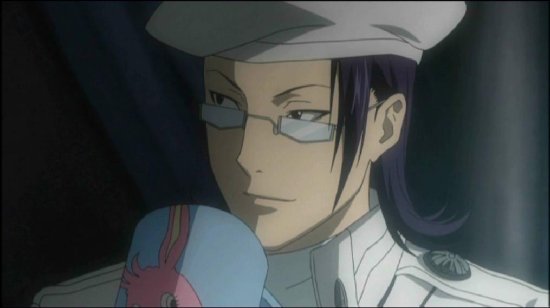
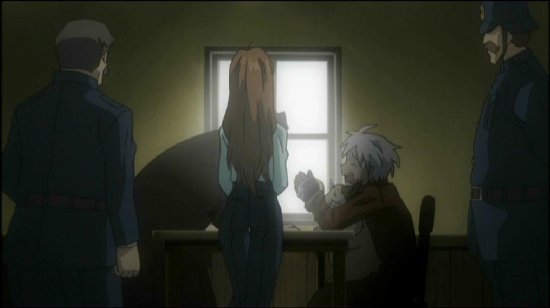
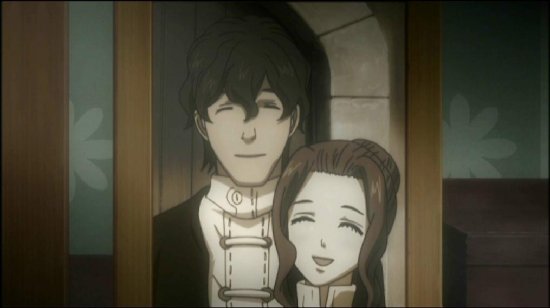
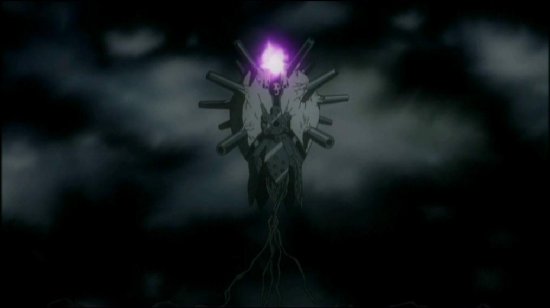
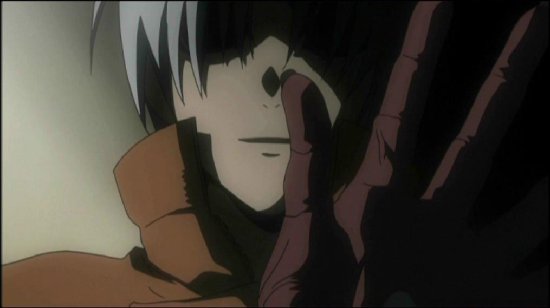
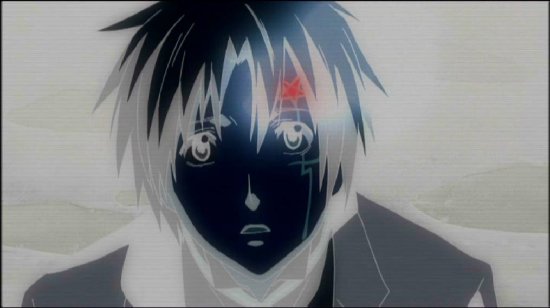
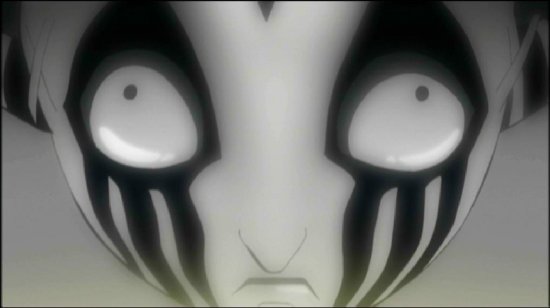
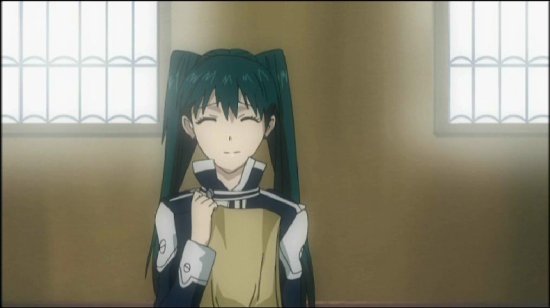
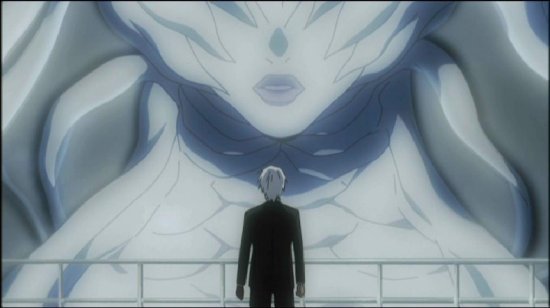
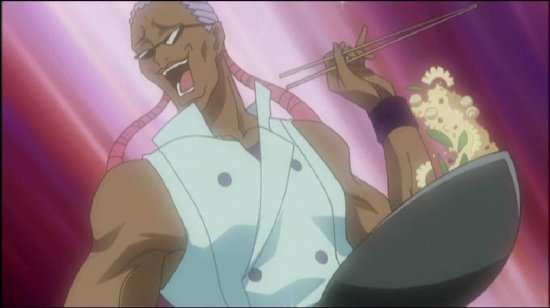


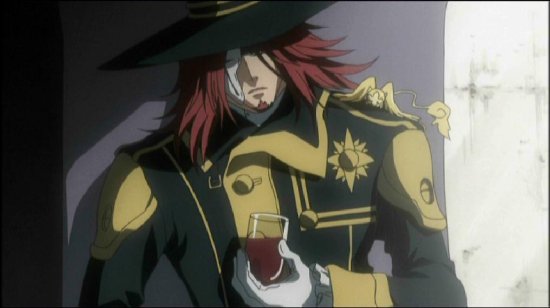
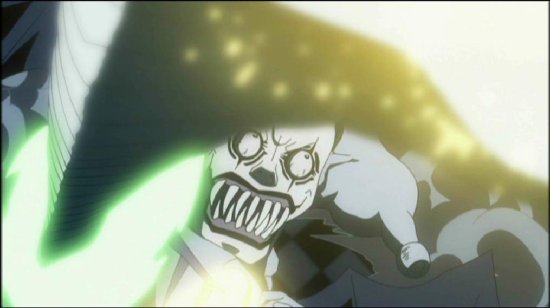
Your Opinions and Comments
Be the first to post a comment!